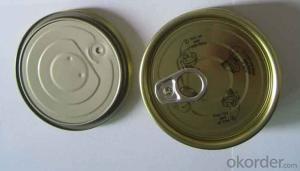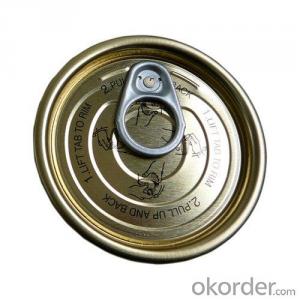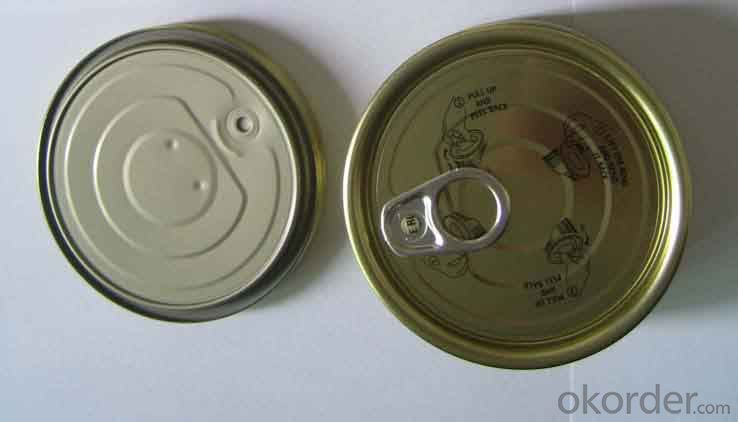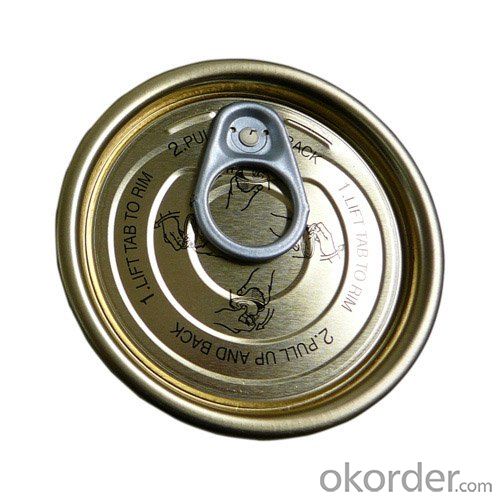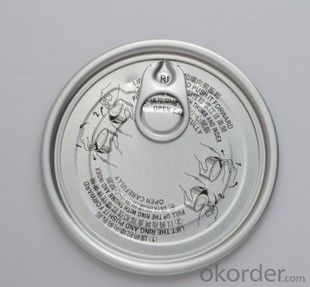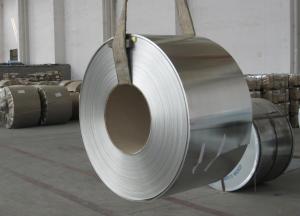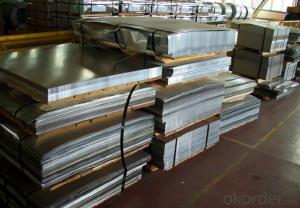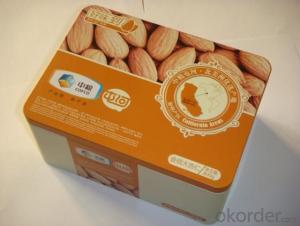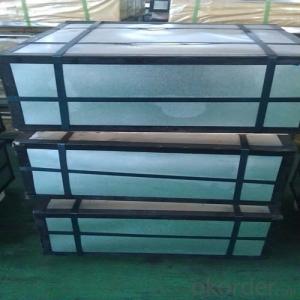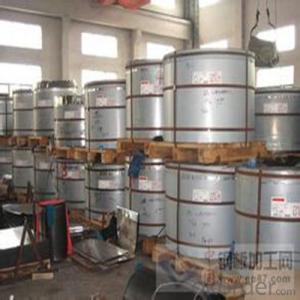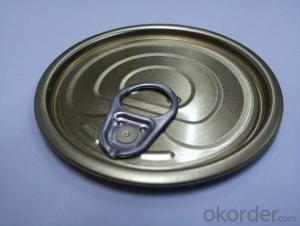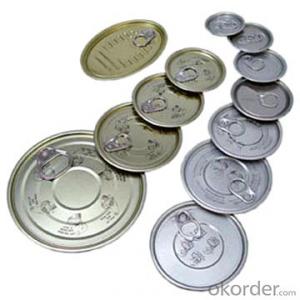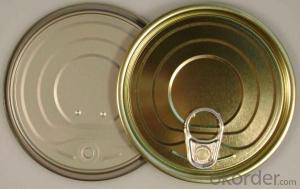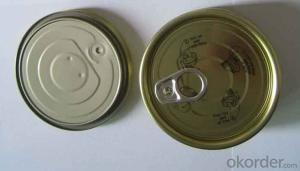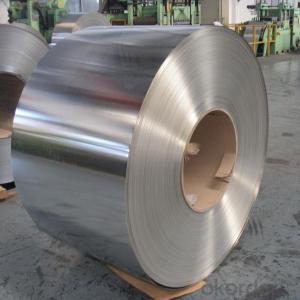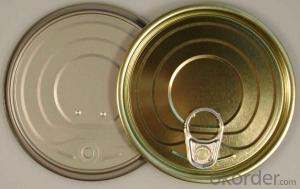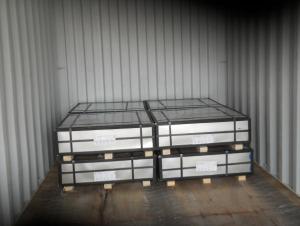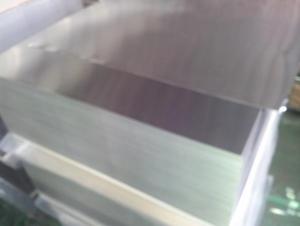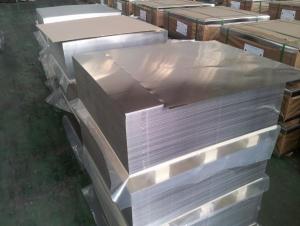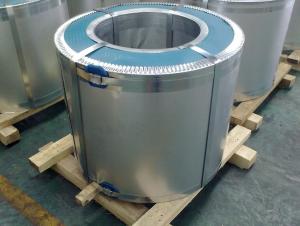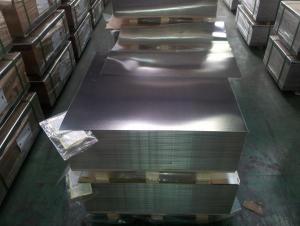High Quality Easy Open End,Tinplate Material, 52mm
- Loading Port:
- Tianjin
- Payment Terms:
- TT OR LC
- Min Order Qty:
- 150000 PCS
- Supply Capability:
- 10000000 PCS/month
OKorder Service Pledge
OKorder Financial Service
You Might Also Like
Quick Details
Metal Type: Tinplate
Feature: Aseptic, Full open
Printing Handling: UV Coating, Varnishing
Custom Order: Accept
Model Number: 202# 52.5mm
Name: Easy open end line
Inner coating: Organosol
Shape: Round
Packing: Paper tube+pallet
Specifications
1.Easy open end line
2.Coating:Epoxy phenolic
3.Material:tinplate
4.Dia:52mm
5.Factory,Can offer OEM service
Name | easy open end line |
Item No. | 202# |
Shape/type | Round |
Size(mm) | Dia 52 |
Coating | Epoxy phenolic |
Material | Tinplate |
Pcs/20 GP’ | 3,040,000 Customize packing: as clients’ requests. |
Features | 1.Used for packaging of tomato paste,jam,salad…etc. 2.Coating can be according to the customer required.
|
Our packing
We could offer package as customers require, by carton or by wooden pallet.
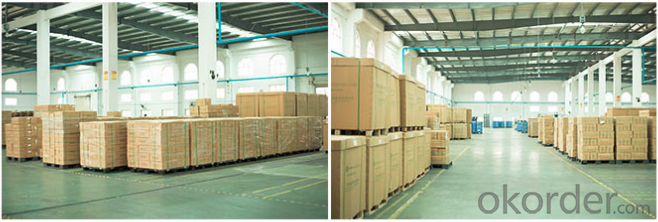
Our Workshop
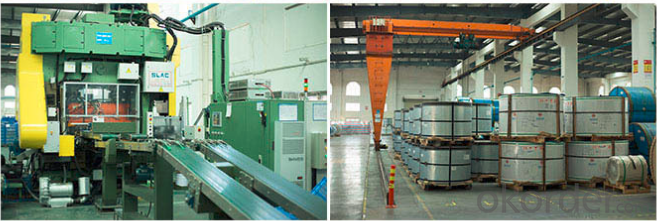
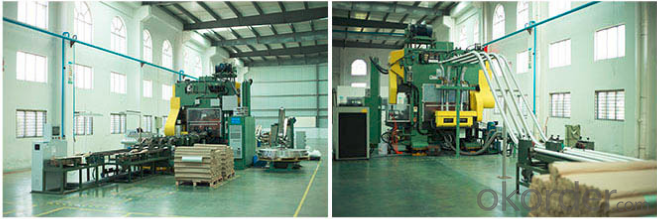
FAQ
1.Q: What is the material of EOE?
We can offer both tinplate and aluminum material made EOE;
2.Q:Could you offer samples for our testing?
YES, we could offer sampler for free if needed;
3. Q:Can you make new mold with customized size I need?
YES, We can make mold for you if reach some qty.
- Q: How does tinplate contribute to the freshness of pet food?
- Tinplate contributes to the freshness of pet food by providing a sturdy and airtight packaging solution. It helps to preserve the flavors, nutrients, and overall quality of the pet food by preventing exposure to oxygen, moisture, and light, which can lead to spoilage. The barrier properties of tinplate ensure that the pet food stays fresh for longer periods, maintaining its taste and nutritional value.
- Q: How does tinplate compare to glass packaging?
- Tinplate packaging offers several advantages over glass packaging. Firstly, tinplate is much lighter than glass, making it easier and more cost-effective to transport. Additionally, tinplate is highly durable and resistant to breakage, which ensures product safety and reduces the risk of damage during handling or shipping. Furthermore, tinplate can be easily shaped and molded into various forms, allowing for greater design flexibility. Lastly, tinplate is recyclable, making it a more sustainable and environmentally friendly option compared to glass.
- Q: How is tinplate used in the food industry?
- Tinplate is extensively used in the food industry for packaging food products. It acts as a protective barrier between the food and the metal, preventing contamination and maintaining the food's quality and safety. Tinplate cans are commonly used for canned fruits, vegetables, meats, and other food items. Additionally, tinplate is also used for making food canisters, containers, and lids. Its corrosion resistance, durability, and ability to maintain food freshness make it an ideal material for food packaging in the industry.
- Q: Tinplate also known as what? What is the density of it?
- Tin plays a major role in preventing corrosion and rusting. It will be the steel strength and formability and corrosion resistance of tin soldering, and beautiful appearance with a material, corrosion resistant, non-toxic, high strength and good ductility properties.
- Q: What are the advancements in tinplate technology?
- Some of the advancements in tinplate technology include improved coatings for enhanced corrosion resistance, the development of thinner and lighter tinplate materials, and the introduction of advanced printing techniques for more vibrant and detailed designs. Additionally, there have been advancements in tinplate manufacturing processes, such as continuous annealing and tin-free steel alternatives, which have improved production efficiency and reduced environmental impact.
- Q: What are the advantages of tin packaging?
- 1. good mechanical properties: tinplate cans relative to other containers, such as plastic, glass, paper containers and strength, and good rigidity, it is not easy to break. It is not only used for small sale packing, but also the main container for large transportation package.2.: excellent barrier tin barrier properties than any other materials are excellent, gas barrier properties, moisture resistance, shading and aroma were good, and the sealing is reliable, reliable protection products.
- Q: How does tinplate contribute to the preservation of tobacco products?
- Tinplate contributes to the preservation of tobacco products by providing a durable and airtight packaging solution. The tin coating on the steel sheet prevents the tobacco from exposure to moisture, light, and oxygen, which can degrade its quality. Additionally, tinplate offers protection against physical damage, ensuring that the tobacco remains intact and fresh for an extended period of time.
- Q: What do tinplate do?
- Material to distinguish between SR (Pu Tongcai) and DR (two rolled material)Annealing is distinguished by CA (continuous annealing), BA (bell annealing), different annealing, and different hardness. Corresponding to different processing properties.
- Q: What's the advantage of metal containers in packing tea?
- Tin cans are internationally recognized food standards for iron packaging. Tinplate contains tin containing selenium, these are good for the human body. Print recognition is good. Good printing effect in tinplate, generally in high-grade tea can now use tin cans. It can damp and damp. Environmentally friendly, rugged and easy to carry.
- Q: What are the different types of tinplate coatings available?
- There are several types of tinplate coatings available, including electrolytic tinplate (ETP), tin-free steel (TFS), and black plate. ETP is the most commonly used and consists of a thin layer of tin on both sides of the steel substrate. TFS, on the other hand, does not have a tin coating but is instead coated with a layer of chromium or chromium oxide. Black plate refers to steel that has not been coated with any protective layer and is typically used for industrial applications.
Send your message to us
High Quality Easy Open End,Tinplate Material, 52mm
- Loading Port:
- Tianjin
- Payment Terms:
- TT OR LC
- Min Order Qty:
- 150000 PCS
- Supply Capability:
- 10000000 PCS/month
OKorder Service Pledge
OKorder Financial Service
Similar products
Hot products
Hot Searches
Related keywords
